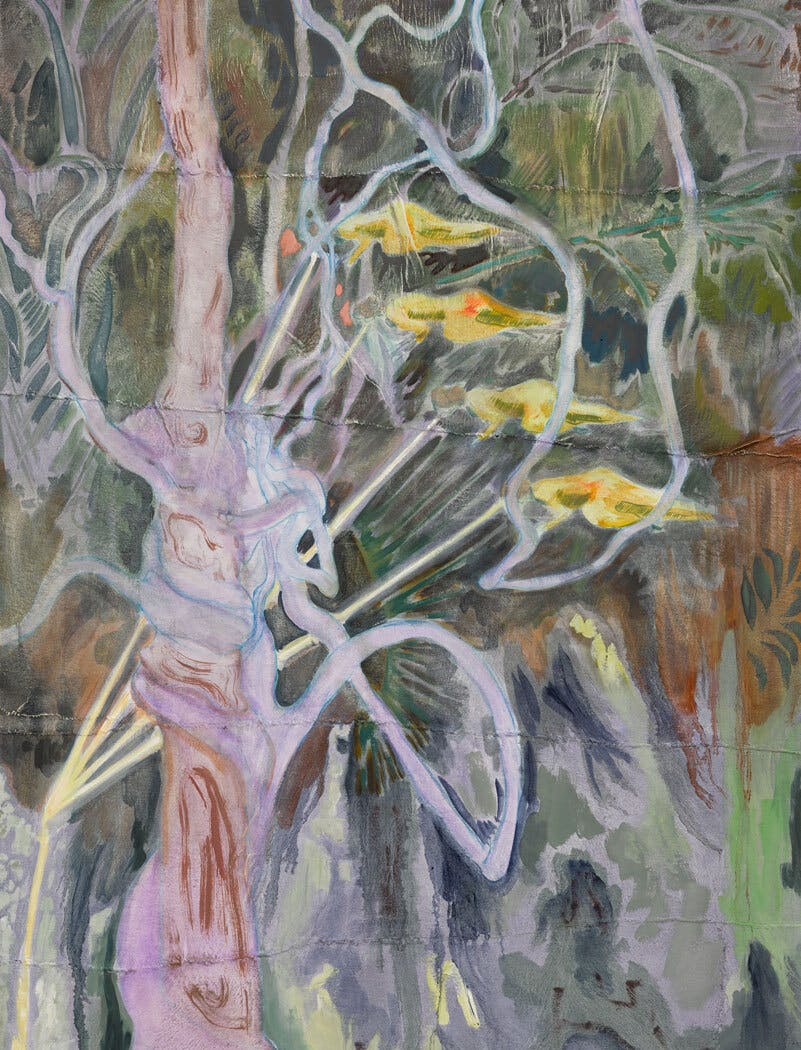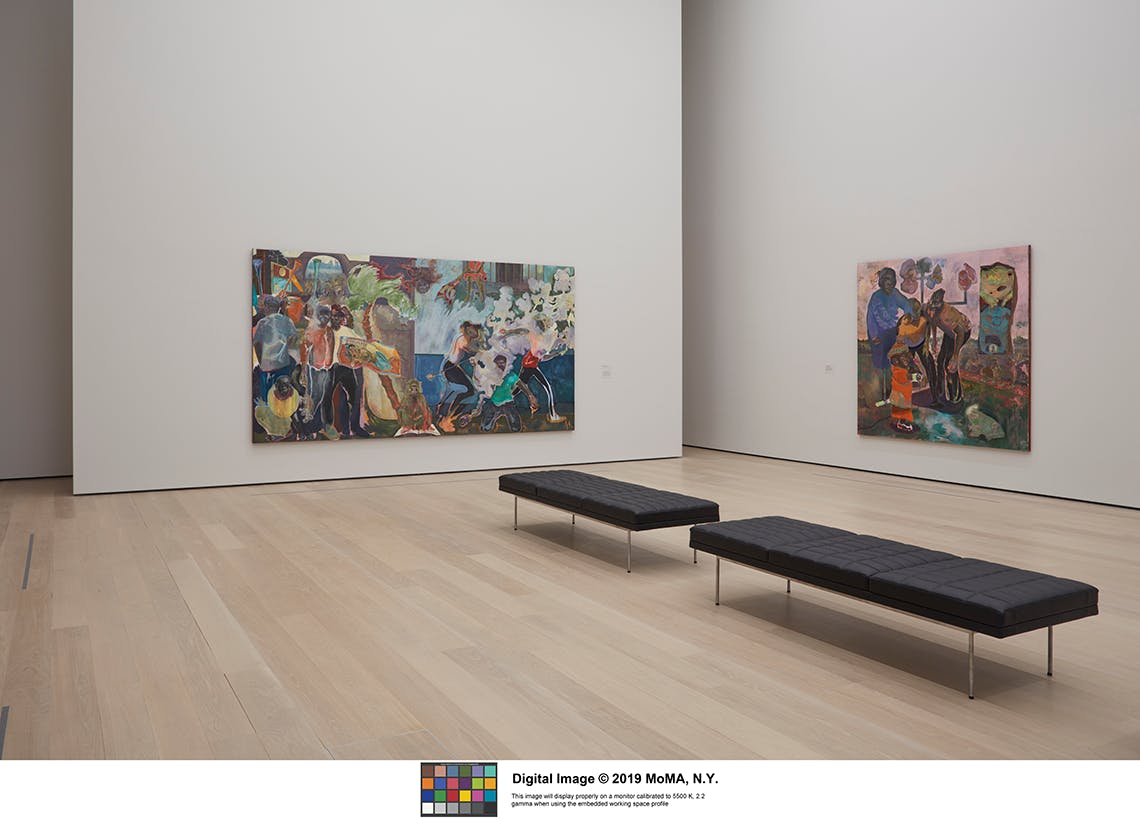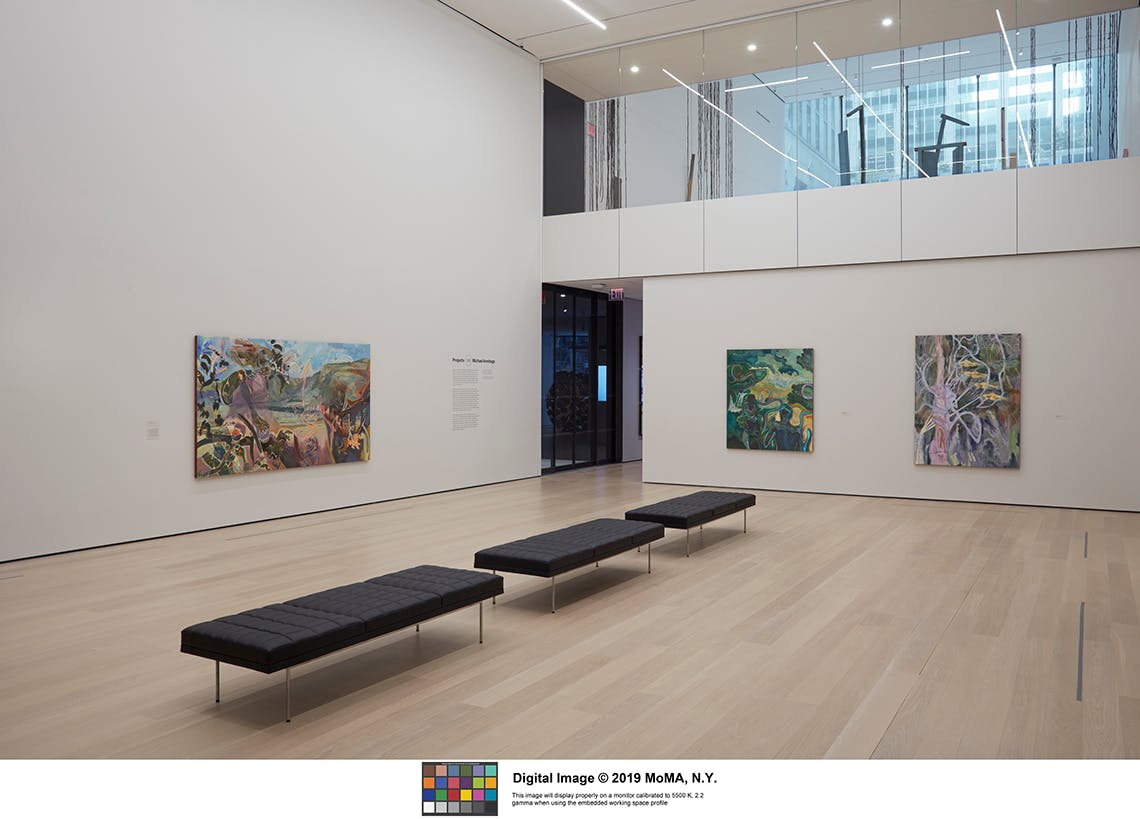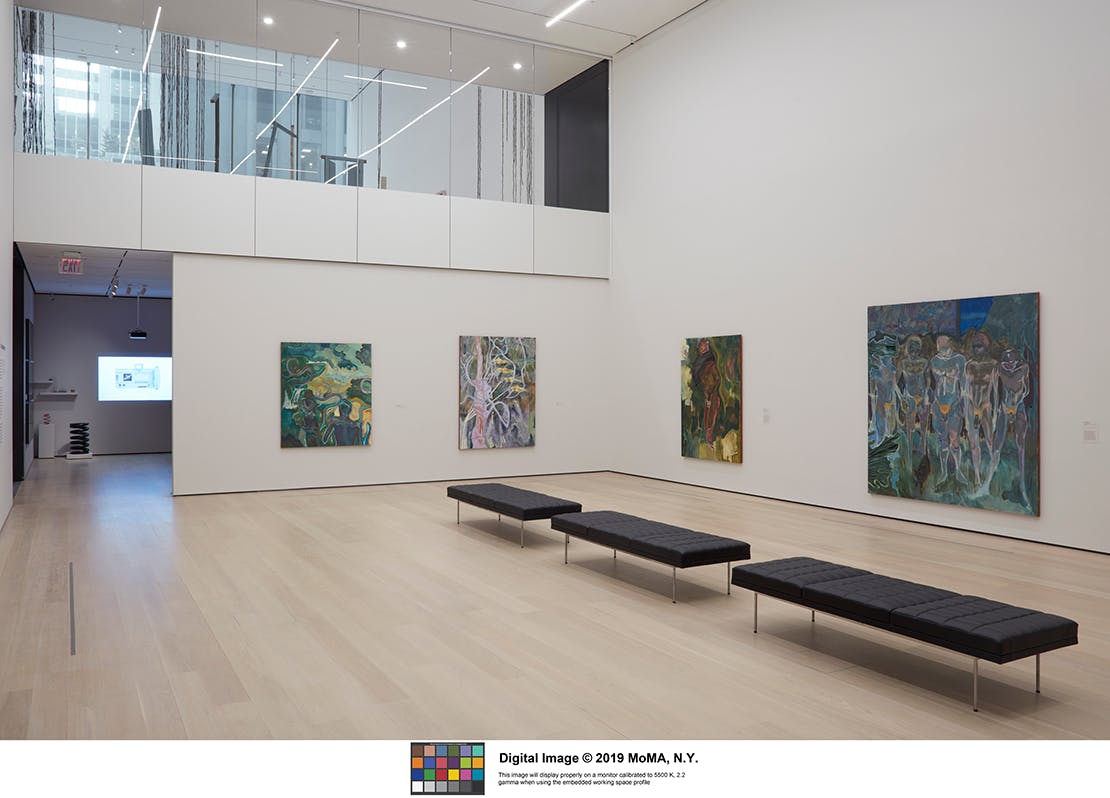Projects 110: Michael Armitage
10.21.2019-01.20.2020
Museum of Modern Art, 11 West 53rd Street, New York, NY
Projects 110: Michael Armitage presents eight paintings that, in the artist’s words, explore “parallel cultural histories.” Here, as in his work more widely, Armitage puts contemporary visual culture in dialogue with art history and the legacy of modernism as it veers toward—and breaks from—the West. Born in Nairobi, Kenya, in 1984, Armitage received his artistic training in London. Today, he travels between London and Nairobi, citing each city as crucial to his creative practice.
Armitage draws inspiration from both European avant-garde artists and East African modernists such as Meek Gichugu (b. 1932, Ngecha, Kenya), Chelenge (b. 1961, Kericho, Kenya), and Jak Katarikawe (c. 1938–2018, Kampala, Uganda). The pull of East African culture is evident not only in Armitage’s visual vocabulary but in his use of lubugo, a fabric made from fig-tree bark, in lieu of canvas as a support for his paintings. First encountered by the artist in a Nairobi tourist market in 2010, the cloth is Ugandan in origin. In this mix of materials and cultural influences, Armitage celebrates a living lineage of narrative, abstraction, and color, creating an homage to the rich and complicated history of painting.
Across this body of work, the artist oscillates between the real and the surreal, the celebratory and the sinister. He merges memories of Kenya with media depictions of East Africa, entangling the personal and the everyday in a web of social and political tensions. Through these compositions, Armitage considers how political reportage, African bodies, and the body politic circulate within systems of global capital, highlighting the fraught relationship between Africa and the West.

Partnership | The Studio Museum in Harlem, The Museum of Modern Art, and MoMA PS1
Organized by Thelma Golden, Director and Chief Curator, The Studio Museum in Harlem with Legacy Russell, Associate Curator, The Studio Museum in Harlem.
The Elaine Dannheisser Projects Series is made possible in part by the Elaine Dannheisser Foundation and The Junior Associates of The Museum of Modern Art.
Projects 110: Michael Armitage
10.21.2019-01.20.2020
Museum of Modern Art, 11 West 53rd Street, New York, NY
Projects 110: Michael Armitage presents eight paintings that, in the artist’s words, explore “parallel cultural histories.” Here, as in his work more widely, Armitage puts contemporary visual culture in dialogue with art history and the legacy of modernism as it veers toward—and breaks from—the West. Born in Nairobi, Kenya, in 1984, Armitage received his artistic training in London. Today, he travels between London and Nairobi, citing each city as crucial to his creative practice.
Armitage draws inspiration from both European avant-garde artists and East African modernists such as Meek Gichugu (b. 1932, Ngecha, Kenya), Chelenge (b. 1961, Kericho, Kenya), and Jak Katarikawe (c. 1938–2018, Kampala, Uganda). The pull of East African culture is evident not only in Armitage’s visual vocabulary but in his use of lubugo, a fabric made from fig-tree bark, in lieu of canvas as a support for his paintings. First encountered by the artist in a Nairobi tourist market in 2010, the cloth is Ugandan in origin. In this mix of materials and cultural influences, Armitage celebrates a living lineage of narrative, abstraction, and color, creating an homage to the rich and complicated history of painting.
Across this body of work, the artist oscillates between the real and the surreal, the celebratory and the sinister. He merges memories of Kenya with media depictions of East Africa, entangling the personal and the everyday in a web of social and political tensions. Through these compositions, Armitage considers how political reportage, African bodies, and the body politic circulate within systems of global capital, highlighting the fraught relationship between Africa and the West.

Partnership | The Studio Museum in Harlem, The Museum of Modern Art, and MoMA PS1
Organized by Thelma Golden, Director and Chief Curator, The Studio Museum in Harlem with Legacy Russell, Associate Curator, The Studio Museum in Harlem.
The Elaine Dannheisser Projects Series is made possible in part by the Elaine Dannheisser Foundation and The Junior Associates of The Museum of Modern Art.
Museum of Modern Art, 11 West 53rd Street, New York, NY




